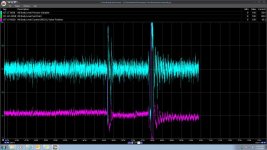sparkytex
Lifetime Supporting Member
I was just recently asked to figure out why the level control in one of our Evaporators was so erratic. I Trended the P&I Loop via PARC View for 24 hours to see what was going on. The set point is for 60 percent level and the Process variable seems to bounce up to 70% then to 60% then down to 50% then back to 60% and follows the same pattern. Over a period of time this oscillation seems to be quite equal in time or "constant oscillations". Each oscillation from peak (70%) to peak is about 2 minutes and 45 seconds on average. Right now the Proportional gain is set to .3 and the integral value or "reset time" TI is set to 10s. Would I not want to increase the integral time say to 20 seconds to slow the controller down to eliminate the oscillations? I'm new to PID tuning but I've also read a lot about it, but not coming from a mathematical background I get easily confused with the formula's involved. Please give some insight to my issue!!
Thanks, TEX
Thanks, TEX








